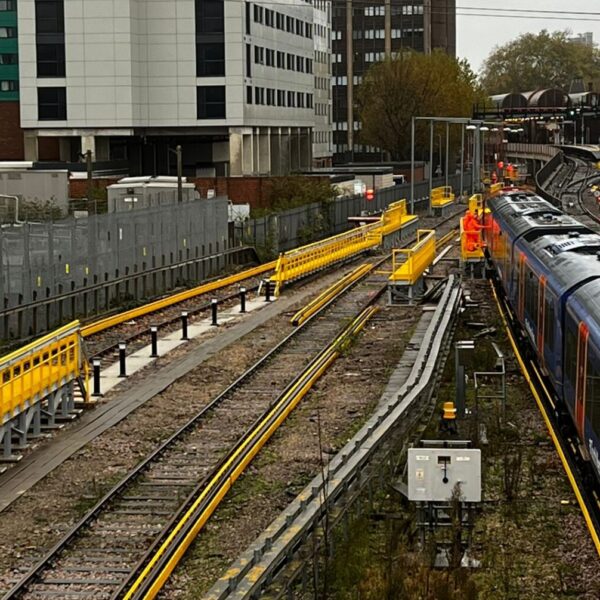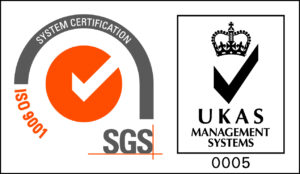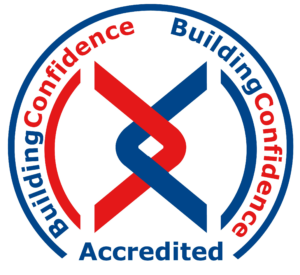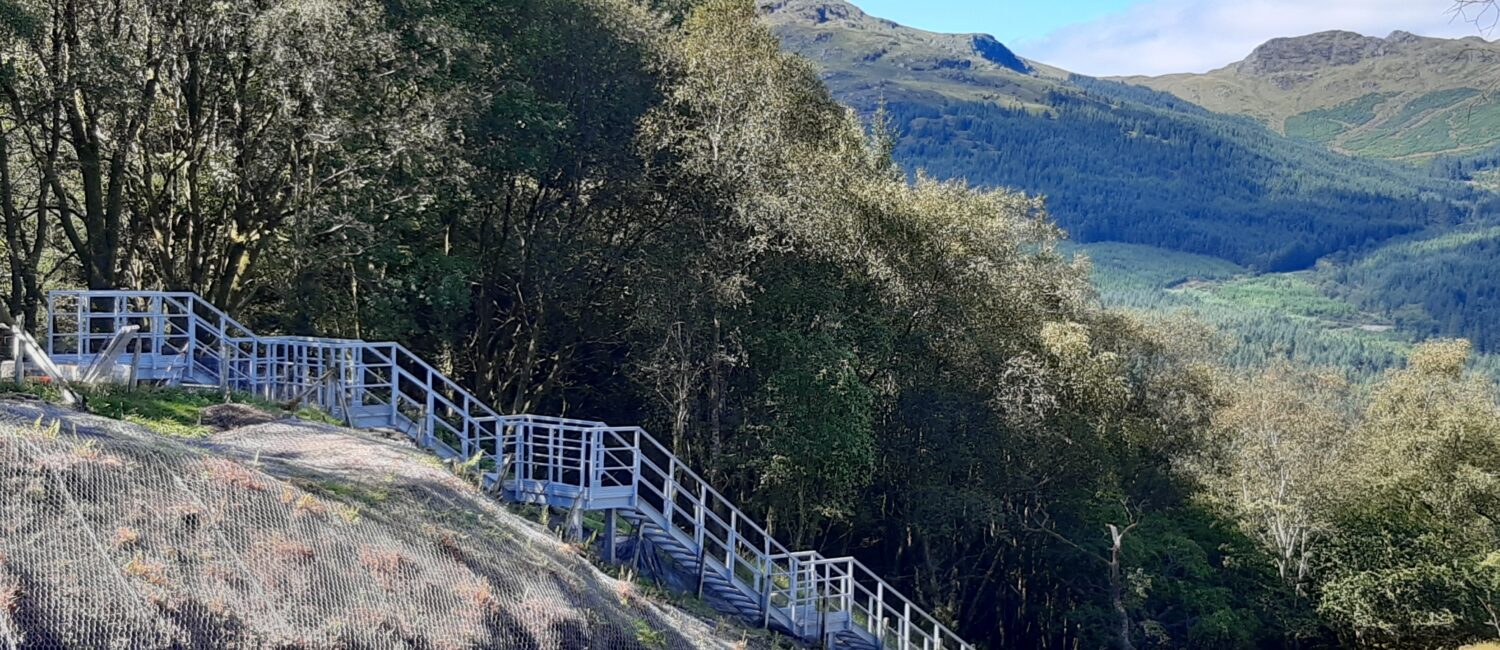
Glendouglas Embankment Staircase
The rugged Scottish landscape offers some unusual challenges when it comes to designing rail access stairs. Careful consideration is required of the site topography for locations of the access point to ensure a level surface of suitable size can be achieved for safe unloading of plants and materials.
There’s no such thing as a ‘standard’ Embankment Staircase. The slopes between road and track are usually steep and uneven, requiring a creative approach to staircase design. Mid-flight platforms and safety gates are essential to ensure that even in the event of a fall, nobody ends up on the track. While the elements we use are standard – GRP Mesh landings and steps, GRP Handrail and GRP Structural Profiles – fitting them together to suit the terrain can be difficult. Some of the solutions need to be pretty creative.
The original timber access stairs at Glendouglas were built in two sections joined by a gravel path. Not only did they not include any of Network Rail’s required safety features, the treads had become dangerously slippery. The first section of the new GRP staircase descends a relatively gentle slope, distinctive in that it needed to be 34m long to travel just 9.6 metres down to the track. It was formed of a single flight of stairs with a 45 degree change of direction at the bottom to line up with the ground level walkway. The lower section was much steeper, requiring no less than four further changes of direction. A grating walkway was built to link the two sections, replacing the old gravel path.
Our client, the QTS Group chose to use GRP over the steel or concrete alternatives because of its unique properties:
- It can be configured to fit ANY type of slope
- The components are relatively lightweight making them easier to transport and manoeuvre into position
- The finished staircase is maintenance-free and can last over 50 years
- GRP is non-corrosive and non-conductive
- The anti-slip finish on the landings & treads reduces slips and falls even in wet or icy conditions
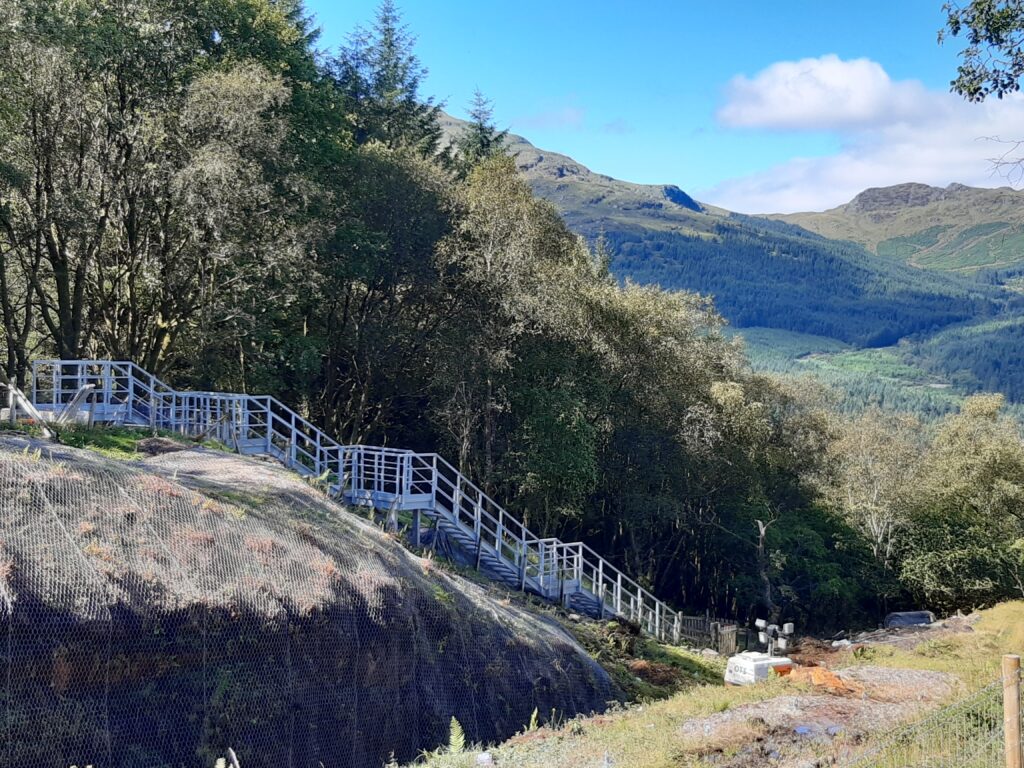
You can download this case study here. To discuss your rail access points contact Dave Riley today.


